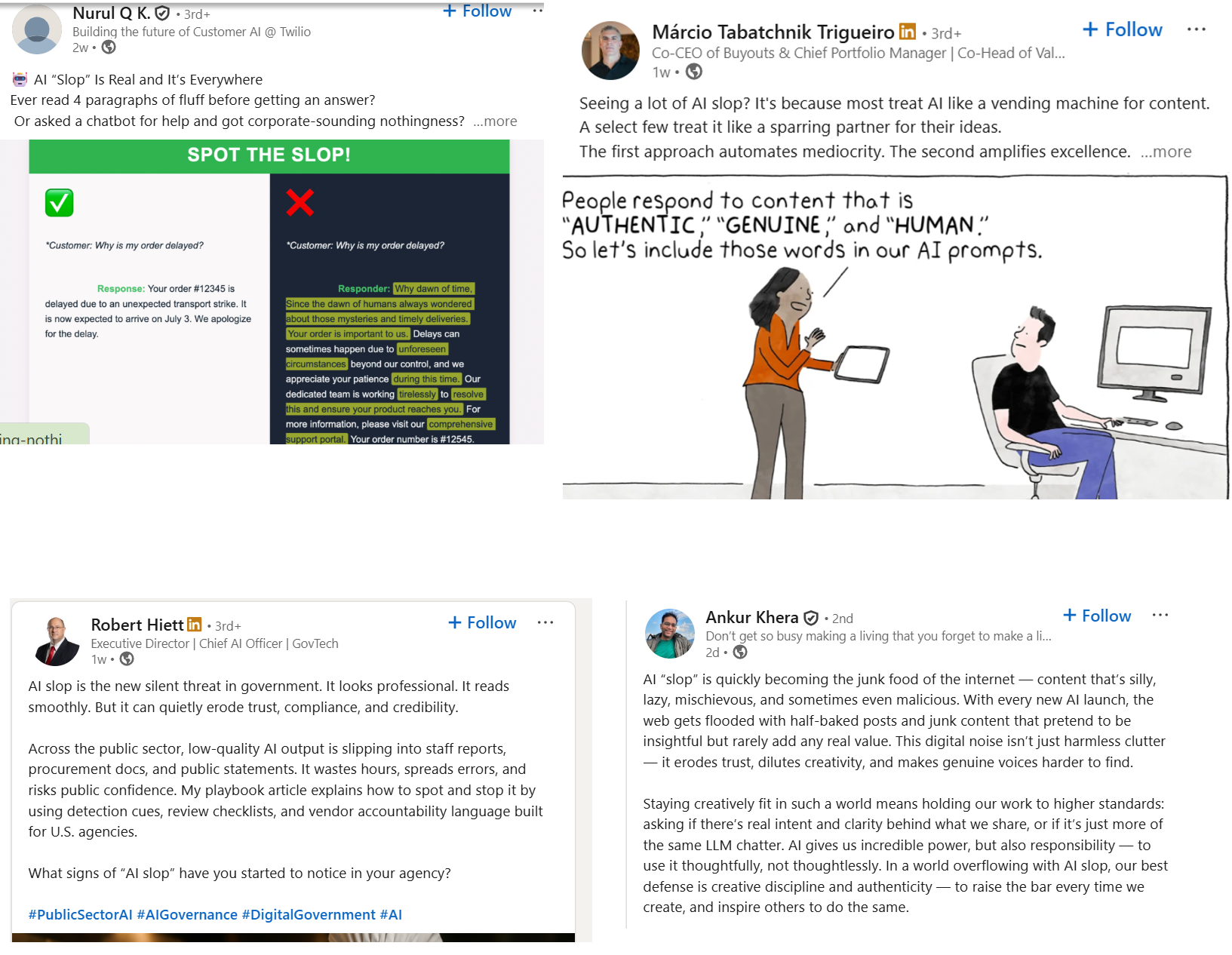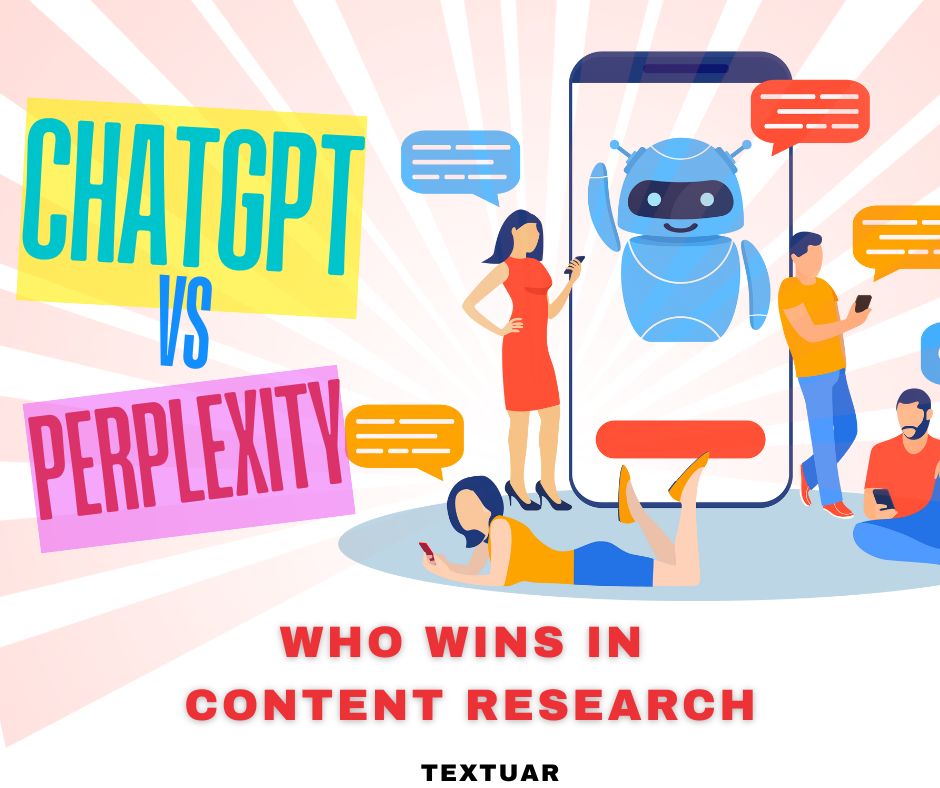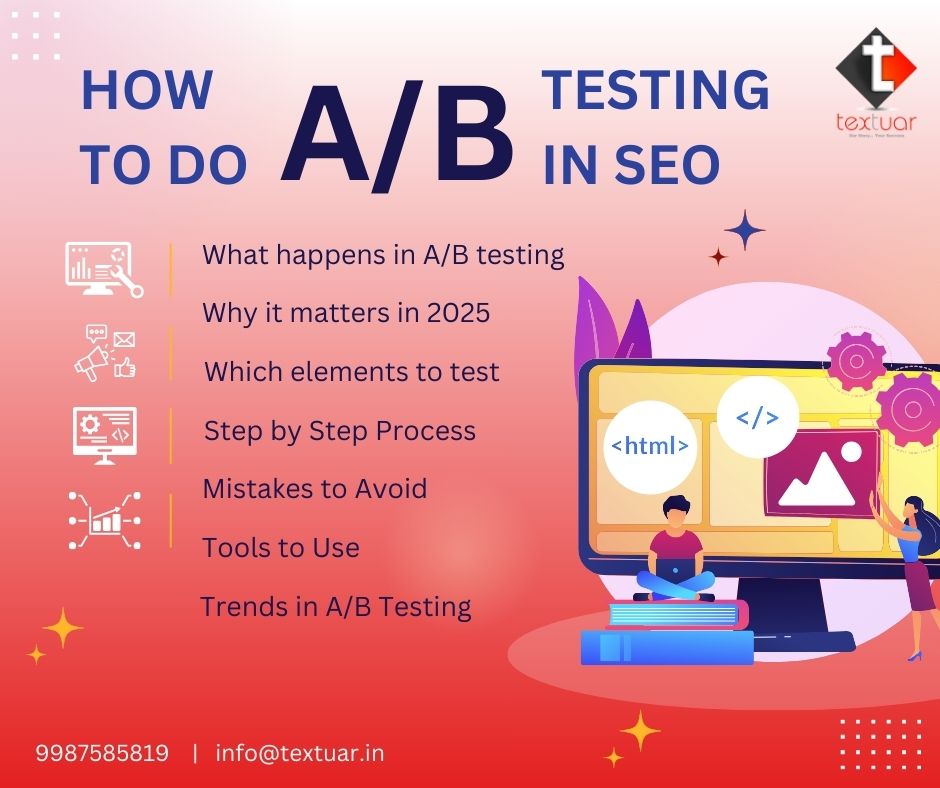📌 TL;DR – Quick Summary
The web is drowning in AI content slop that is lifeless, repetitive content with no empathy or context. This blog reveals how brands, editors, and writers can prevent AI slop in content marketing from degrading online quality.
It explains telltale signs, key risks, and Textuar’s 7-step human-first framework to keep writing authentic, accurate, and engaging.
Discover how to balance AI efficiency with human creativity to protect your brand’s credibility and the Internet’s readability.
Remember the last few articles you read which strangely started with similar sounding ‘In today’s times…..’? Your mind’s BS-meter would have picked up this weird pattern quickly. If you dug deeper, you would find these to be AI content slop.
With the rise of AI, a few marketers are straying away from the core tenets of ‘Quality over Quantity.’ They are using AI tools like ChatGPT to mass-produce content, hoping to game the algorithm and improve rankings.
This is leading to AI slop, where bad, lifeless content (which seemingly looks fine on the surface level) is fast filling up the Internet and overshadowing well-researched, quality content.
Today we will propose a few solutions to prevent AI slop from polluting the Internet and damaging user experience in content consumption.
What is AI Content Slop?
Textuar’s co-founder, Hanif Hasan, saw a rise in concerns over AI-generated content on his LinkedIn feeds. A common term reverberated continuously on his feeds – AI slop.

This led us to go deeper into this nuisance and come up with a concrete way to prevent it from affecting the quality of content published.
Definition – AI slop is low-quality machine-generated content that lacks empathy and insight. It is not content made by AI, but the unedited and unverified raw output that gets published as finished work.
Issue– Such content doesn’t have the human essence needed to engage readers till the end of the blog or article. Repetitive phrasing and regurgitation of ideas are other issues that may impact a smooth user experience. There is no context, no substance and no value at all in such content. Even search and answer engines like ChatGPT favor content quality over quantity.
Solution– Content marketers and writers need to identify AI content slop to differentiate between AI-generated content quality and authentic, well-researched writing in human-led content creation.
Impact– Knowing about AI slop helps content marketing and SEO agencies take concrete steps to avoid the problem and ensure that only quality content gets published online.
What is the Risk of AI Content Slop?
True, AI promises efficiency, but we should be mindful of the cost of AI slop. It’s not just a creative problem; it’s also risky from both a business and ethical viewpoint. With the unfiltered text of machines out there across the web, it impacts credibility and search visibility. Here are four major risks that every brand, writer, and publisher should recognize.
1. Decline of Content Credibility
Readers can spot emotionless writing at a glance. Once they perceive a brand is putting out AI-generated trash, there’s no trust. That gradual loss of professionalism erodes credibility. Readers prefer to spend time only on that content which sounds sincere and shows a real understanding of their needs.
2. AI Content Slop Leads to Poor SEO Performance
Search algorithms are getting better at spotting low-value and repetitive content. AI slop in content marketing might spike search traffic for a bit, but then it goes downhill fast. As the engagement metrics decline, Google lowers the site’s authority as well. You should focus on putting out the good old-fashioned expert-driven content. In 2026, it still remains the only worthwhile path to long-term visibility and SEO success.
3. Brand Voice Blurring
Automated text lacks personality. It can dilute a brand’s tone, making everything it says sound inconsistent or generic. Whenever that unique voice fades away, even loyal readers find it hard to relate. Repairing an identity lost in digital spaces will then take far more effort than it took to retain it.
4. AI Content Slop Spreads Misinformation
AI models often hallucinate facts, especially in technical or niche matters. When unverified data appears in published articles, it mars the brand’s authority. The Oct 2025 Deloitte report with AI-generated content and non-existent data is a case in point. The result is reader confusion and the rise of false information. This is a problem that responsible creators must prevent.
How to Spot AI Content Slop?
Now that you know the inherent dangers of AI slop in content marketing, you would want to know about the tell-tale signs of AI slop in content marketing. Knowing about these would help you take proactive measures to prevent it from being published under your brand name.
Jose Luis Casadiego Bastidas at Kearney has provided a 5 minute checklist for spotting AI slop and improving it before it gets published online.
| Summary Table- Quick Checklist to Spot AI Slop in Content Marketing | ||
| Sign | What It Looks Like | Why It’s a Problem |
| Vague and Generic Language | Heavy use of vague buzzwords such as “synergize,” “optimize,” and “leverage,” but lacking any company-specific insights or actionable context. | Indicates that the content could fit any brand or industry, showing a lack of understanding or original thought. |
| Lack of a Defensible Point of View | The writing summarizes facts but avoids taking a stand. It feels safe, neutral, and forgettable. | Reflects AI’s inability to form opinions or defend arguments, reducing impact and authority. |
| “Hallucinated” Ring of Truth | Presents convincing statistics or quotes that sound right but have no real source. | Leads to misinformation and credibility loss once readers or the clients fact-check it. |
| Inconsistent Tone and Robotic Structure | Sentences swing between overly formal and oddly casual. Pacing feels unnatural when read aloud. | Signals lack of editorial rhythm and the absence of a confident, human writing voice. |
How to Prevent AI Content Slop: A 7-Step Framework
It is true that AI can be powerful, but only when you guide it wisely. These are 7 steps you can take to avoid AI slop in content marketing.
1. Champion the Human-first Content Mindset
True change begins with a workplace culture shift. From the top management to the interns, everyone should inculcate a mindset of using AI only where it is needed.
You need to set up a clear and firm expectation that AI is an assistant not a master.
Step to Take– Mandate that all content needs to be edited, proofread, verified and validated by an expert human writer. The ultimate ownership should be with humans and not AI.
2. Set Up Reasonable Standards for AI Spotting
In recent years, many content managers have adopted AI detection tools that claim to measure how “human” a piece of text is. These tools have some merit, but to enforce zero AI threshold is destructive.
When told to attain a 0% AI score, writers begin rewriting even perfectly natural sentences just “to beat the tool.” The result is content that reads awkwardly and loses its natural flow. Ironically, the text of this kind often feels even more robotic than the original draft, if you look at human vs. AI content quality.
Step to Take– A better approach is to allow a tolerance range, for example, 10% probability of AI. Also, try to judge content on the grounds of clarity, tone and emotional connection. A human editor needs to see if the message aligns with the user search intent.
3. Mandate ‘No AI’ Period for New Writers
When writers are hired, you may use the first few months to determine their natural skill level in writing and framing thoughts in words. If a new recruit relies on AI from day one, it becomes impossible for you to know how much skill they really have in writing and grammar.
Step to Take– A good rule is to restrict the use of AI for new writers in the first four to six months of their employment. This phase gives management a chance to judge whether the writer grasps tone, coherence and storytelling. It makes it clear whether the person can craft a narrative that will hold people’s interest without artificial assistance.
Once the writer emerges from this phase, AI can be introduced as a productivity enhancing tool for research or outline generation.
4. Educate Clients about the Real Value of Human Writing
Many agencies and freelancers face a frustrating problem. Their clients flag their content as AI even though it was completely human written. The reason – an AI detection tool flagged it as AI. As a result, the client rejects well-articulated blogs and web copy simply because some random tool marked it as AI-generated. The issue with these tools is well-documented. Even the US Constitution was flagged as AI written!
Step to Take– Clients ought to see performance metrics like engagement, dwell time, social shares, and conversion. This helps them understand what really counts. When they focus on results rather than incorrect detection scores, they realize that the most valuable content is still, after all, human at its core, even if it is flagged as AI.
5. Empower Editors to Flag Weird Words
An experienced editor has become the last line of defense against AI. He can tell at a glance when something is not quite right, even if the grammar is flawless.
AI tools often add to authentic human writing ornate or irrelevant words not found in normal language. Such words as “tapestry”, “realm”, “plethora”, and “landscape” are always creeping into business or technical blogs where they simply don’t belong. These are sure signs of being an over-polished machine-like copy that lacks context.
Steps to Take- Editors must be on the alert for such words and check them out against what makes sense inside the customer’s industry. They should flag words that feel out of place and revise them using simpler audience-focused vocabulary.
For example, a B2B SaaS company would never describe its software solution as a “tapestry of innovation”.
At Textuar, we have these instructions as a part of our content style guide-
- Please maintain professional tone and eliminate awkward or uncommon phrasing.
- It needs to specifically focus on industry-sensitive language.
- Every word needs to align with your brand voice and audience expectations.
6. Create Human Quality Index in Content Writing
When AI tools have their score of detection, why shouldn’t people have one? A Human Quality Index (HQI) can measure factors that AI cannot, such as empathy, context and relevance. This human-centric evaluation rewards real effort over robot-like reproduction. When agencies track HQI alongside traffic and engagement metrics, they’re telling writers to think quality rather than quantity.
Over time, such scoring can help identify what type of writing really does drive business results. Not merely what passes algorithms.
Step to Take– Each content can be rated on:
- Empathy in tone: Does the writing sound human, warm and conversational?
- Reader retention: How long do readers stay engaged?
- Industry sensitivity: Does the vocabulary fit the niche?
- Depth of insight: Does the content teach something new, or just repeat surface facts?
7. Reward Authenticity, Not Volume
Today’s content marketing often emphasizes creation without originality. But ten shallow blogs cannot match a single deeply researched, human driven article which resonates with an audience in its gravity of thought and craftsmanship.
This way, you encourage teams to pursue meaningful storytelling rather than mere output. Slower, more thoughtful content creation encourages less mistakes, stronger storylines and greater trust. When businesses simply stop rewarding quantity, it discourages AI slop from taking over.
Step to Take– It is necessary that companies redefine their criteria for success. Rather than going price per word or by article, think about rewarding your writers for impact: shares, engagement or repeat visits.
Summary – 7-Step Framework to Prevent AI Content Slop
To summarize, these are the 7 steps you can take to avoid AI slop from polluting the Internet
| 7-Step Framework to Prevent AI Content Slop | |||
| Step | Core Idea | Key Action (Step to Take) | Intended Impact |
| 1. Champion the Human-First Content Mindset | Build a workplace culture where AI is seen as a tool, not a replacement for human creativity. | Mandate that every piece of content must be edited, proofread, verified, and validated by expert human writers. | Establishes clear ownership and accountability for content quality. |
| 2. Set Up Reasonable Standards for AI Spotting | Avoid enforcing unrealistic 0% AI detection scores that lead to unnatural, robotic writing. | Allow a small AI tolerance range (around 10%) and judge content by clarity, tone, and reader connection. | Keeps writing natural, readable, and aligned with user intent. |
| 3. Mandate ‘No AI’ Period for New Writers | Evaluate real writing ability before granting AI access. | Restrict AI use for 4–6 months after hiring, focusing on grammar, coherence, and storytelling. | Builds a foundation of authentic skill and language confidence. |
| 4. Educate Clients About the Real Value of Human Writing | Many human-written articles are wrongly flagged as AI by flawed detection tools. | Show clients metrics like engagement, dwell time, and conversions instead of relying on AI detection scores. | Helps clients value human creativity and meaningful results over false flags. |
| 5. Empower Editors to Flag Weird Words | Editors are the last line of defense against AI-style phrasing and tone issues. | Train editors to remove irrelevant or ornate words and enforce industry-sensitive language and tone guidelines. | Maintains professional, brand-aligned, and audience-relevant communication. |
| 6. Create a Human Quality Index (HQI) | Introduce human-based scoring that measures empathy, context, and insight- qualities AI cannot replicate. | Rate content on empathy, reader retention, industry fit, and depth of understanding. | Rewards originality and encourages deeper, human-centered storytelling. |
| 7. Reward Authenticity, Not Volume | Move away from quantity-driven targets that promote shallow AI-heavy writing. | Reward writers based on engagement, shares, and repeat readership, not per-word or per-article payment. | Motivates quality storytelling and reduces mass-produced, low-value content. |
Conclusion
The hunger for cheaper production and faster publishing has led to a rise in AI generated content. The real problem arises when the ‘human in the loop’ approach is absent and writers use raw and robotic AI content as finished work.
It is better to identify signs of AI slop in content marketing and build proper checking mechanisms. This way, you can prevent publishing such slop under your brand name.
Textuar’s 7 step framework is ideal for uplifting the content with human emotion, context and fact-checking. Make sure to use these steps and engage your target readers better. Contact us for quality content that brings your customers closer to your brand.
FAQ
What is AI content slop?
It is machine-generated text that looks fine on the surface, but has neither empathy nor insight. It lacks context and is therefore, the fluff is of no real value to readers or brands.
Why does AI slop hurt content marketing?
AI slop harms credibility and lowers SEO rankings. Eventually, they even confuse the voice of a brand. Over time, repetitive text replaces impactful storytelling.
How can editors recognize a piece of AI-generated content slop?
If text is jam-packed with vague buzzwords, the narrative voice changes suddenly even though there is no apparent reason for it to have done so, or if data is obviously made up, it is obviously AI slop. If you read the copy out loud, the robotic rhythm and awkward wording will soon be apparent.
What is the Human Quality Index (HQI) for writing content?
The score tracks how empathetic or engaging your writing is, and what’s your level of insight in the content. It preserves the authenticity and quality even when AI tools provide support.
How do brands stop AI slop spreading over the internet?
Brands should train writers with rigorous training without AI. Then establish achievable AI use rules and reward quality over quantity. Digital spaces remain credible and engaging by taking a human-first content approach.









